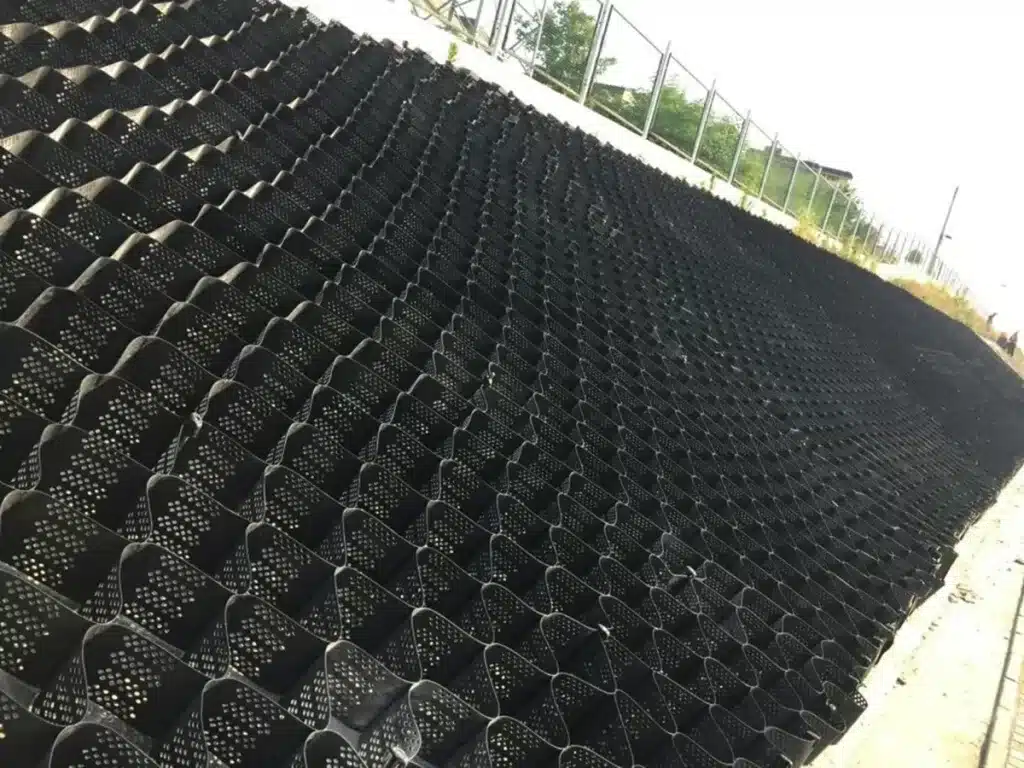+86-159 9860 6917
info@geofantex.com
geofantex@gmail.com
+86-400-8266163-44899
In modern construction, the need for effective soil stabilization and erosion control has led to the innovative use of geocells, which, combined with geotextiles, create durable ground grids. Known for their strength, flexibility, and environmental benefits, geocell geotextile ground grids are reshaping construction practices. This article delves into the role of geocells in ground grid construction, their applications, advantages, and how they contribute to building stable foundations in diverse environments.
What is a geocell geotextile ground grid?
A geocell geotextile ground grid is a three-dimensional, honeycomb-like structure often made from high-density polyethylene (HDPE). It is designed to stabilize soil and distribute loads evenly across a surface. When combined with a geotextile layer, the geocell ground grid forms a composite system that effectively reinforces soil, prevents erosion, and provides support for construction applications. This ground grid system is widely used for stabilizing weak soils in roadways, slopes, retaining walls, and foundations, ensuring a stable base in challenging conditions.

How does geocell geotextile construction benefit building projects?
Geocell geotextile construction offers several benefits in building projects. Firstly, it stabilizes the ground by reducing soil displacement and preventing erosion, which is crucial for construction in soft or loose soils. Secondly, the interlocking cells create a strong, load-distributing foundation that can handle heavy loads, making it ideal for roads, pavements, and foundations. Additionally, geocell geotextile systems are environmentally friendly, often reducing the need for additional materials like concrete or asphalt. This leads to cost savings and contributes to sustainable construction practices.
What are the applications of geocell geotextile ground grids?
Geocell geotextile ground grids are incredibly versatile and have a wide range of applications. They are commonly used in roadway construction to stabilize subgrades, ensuring longevity and reducing maintenance needs. In slope stabilization, geocells prevent soil erosion by creating a stable surface that can support vegetation growth. They are also used in constructing retaining walls, where they reinforce the soil and prevent landslides. Additionally, geocell geotextile ground grids are applied in environmental projects, such as riverbank and shoreline protection, where they reduce erosion and enhance stability.
What materials are used in geocell geotextile ground grids?
Most geocells are constructed from HDPE (High-Density Polyethylene) due to its flexibility, durability, and resistance to chemicals and UV radiation. The geotextile fabric is typically made from nonwoven or woven polypropylene or polyester, providing filtration and separation benefits. These materials make geocell geotextile ground grids durable and suited for various environments, from arid regions to wetland areas, ensuring long-lasting support in construction applications.
The geocell geotextile ground grid system is an innovative solution for soil stabilization, erosion control, and sustainable construction. From roads and retaining walls to environmental protection projects, these ground grids offer strength, flexibility, and eco-friendly benefits. Their versatility extends to both permanent and temporary applications, making them invaluable for construction projects across diverse settings. Geocell geotextile technology continues to support the industry’s move toward efficient, sustainable building practices, ensuring stable and resilient infrastructure for the future.



Get Free Sample
We’ll respond as soon as possible(within 12 hours)





















